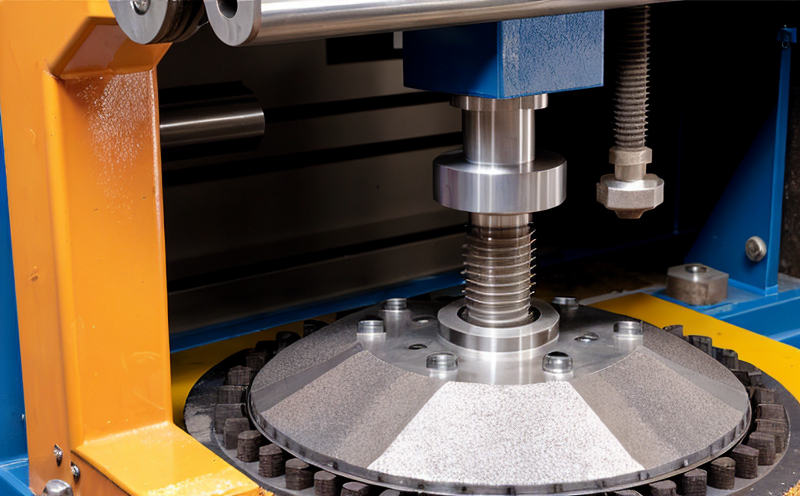DIN 45673-3 Mechanical Fatigue Testing
The DIN 45673 series is a set of standards developed by the German Institute for Standardization, focusing on testing and quality assurance in mechanical components. The third part of this standard, specifically DIN 45673-3 Mechanical Fatigue Testing, provides comprehensive guidelines for assessing the fatigue strength and reliability of mechanical components subjected to cyclic loading.
Understanding the concept of mechanical fatigue is crucial in the design and manufacturing processes. Fatigue failure occurs when a component repeatedly experiences stress cycles that are below its ultimate tensile strength, leading to the gradual development of micro-cracks which eventually culminate in complete fracture. This phenomenon can be critical in HVAC equipment where components like fans, compressors, and heat exchangers operate under cyclic loading conditions.
The DIN 45673-3 standard specifies a series of tests aimed at simulating real-world operational stresses on mechanical parts to determine their durability and performance. The testing process involves subjecting the specimen to controlled cycles of stress until it reaches failure. This approach allows manufacturers to identify potential weaknesses in design or material selection, ensuring that products meet stringent reliability requirements.
The standard outlines various test methods tailored to different types of mechanical components. For instance, it covers torsional fatigue testing for shafts and drive systems, bending fatigue tests for structural members, and axial fatigue tests for rod-like elements. Each method is designed to replicate specific operational conditions encountered in HVAC equipment, thereby providing a realistic assessment of the component's performance under cyclic loading.
Preparation of specimens prior to testing is critical according to DIN 45673-3. This includes ensuring that the material properties are accurately characterized and that any surface treatments or coatings have been appropriately accounted for in the test setup. The specimen should be free from defects, machined to precise dimensions, and aligned correctly within the test fixture.
The instrumentation used during these tests is sophisticated and highly accurate. Strain gauges, load cells, displacement sensors, and temperature probes are employed to monitor critical parameters such as stress levels, deformation rates, and thermal effects. Data acquisition systems collect this information at high frequencies, allowing for detailed analysis of the fatigue behavior.
Upon completion of the test cycle, rigorous inspection procedures are followed to identify any signs of failure or damage. This includes visual inspections, non-destructive testing methods like ultrasonic testing (UT), and mechanical evaluations such as hardness tests and metallographic examinations. The results from these analyses provide valuable insights into the fatigue life of the component.
The standard also emphasizes the importance of accurate reporting and documentation. Detailed reports should document all test parameters, including stress levels, frequency of cycles, temperature conditions, and any anomalies observed during testing. This information is crucial for quality managers and compliance officers to assess whether products meet specified reliability standards.
Why It Matters
The significance of mechanical fatigue testing cannot be overstated, especially in the context of HVAC equipment where reliability is paramount. By adhering to DIN 45673-3 guidelines, manufacturers can ensure that their products are robust enough to withstand the cyclic loading conditions encountered during operation.
Failure due to fatigue can lead to costly downtime and maintenance issues, not to mention potential safety hazards. Implementing this testing ensures that HVAC components operate efficiently over extended periods without compromising on performance or quality. This aligns with broader sustainability goals by reducing waste and promoting the use of durable materials.
The standard also serves as a benchmark for compliance officers responsible for ensuring adherence to international standards. By incorporating DIN 45673-3 into their quality assurance processes, organizations demonstrate their commitment to excellence in product development and manufacturing.
For R&D engineers, this testing provides invaluable data that can inform iterative improvements in design and material selection. It helps identify areas where enhancements are needed to improve fatigue resistance, thereby contributing to the overall advancement of HVAC technology.
Applied Standards
DIN 45673-3 is part of a broader series of standards that collectively address various aspects of mechanical testing. It is closely aligned with other international standards such as ISO and ASTM, ensuring consistency across different regions.
- ISO 12106:2004 – Reliability assessment and prediction for mechanical systems
- ASTM E1875-19 – Standard practice for fatigue testing of materials
The standard is regularly updated to incorporate advancements in testing techniques and methodologies. These updates ensure that the guidelines remain relevant and applicable to current engineering practices.
Use Cases and Application Examples
- Torsional Fatigue Testing of Fan Shafts: Ensuring durability in large HVAC systems where fans operate under constant speed changes, leading to cyclic torsional loads.
- Bending Fatigue Testing of Heat Exchanger Plates: Evaluating the resilience of heat exchangers subjected to temperature and pressure variations during operation.
In addition to these specific applications, the standard is also applicable to other mechanical components such as pulleys, gears, and shafts found in HVAC systems. The comprehensive nature of DIN 45673-3 makes it a versatile tool for quality assurance across various segments within the industry.





